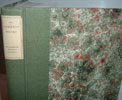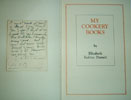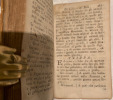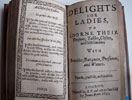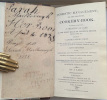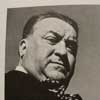Modern Culinary Art.
THE BEST FRENCH AND FOREIGN COOKERY * COOKERY - PASTRY - SIMPLE CONFECTIONARY *** ENTREMETS - ICES - JAMS **** HOME PRESERVES - DRINKS - ETC. Reputed dishes of foreign cookery - Service of table - Decoration with flowers - Service of wines - Choice and knowledge of foods. Cutting of meats - Dinners * 50 MENUS OF DINNERS, BIRTHDAY, FEASTS, WEDDINGS, ETC. MENUS FOR DIFFERENT DIETS - CURES OF FRUITS * WORK CONTAINING MORE THAN 700 PAGES, 530 OF TEXT, 3,500 recipes clearly stated and necessary explanations 207 illustrated and coloured pages of 480 different dishes 48 pages illustrated in black. by Henri-Paul Pellaprat. Headmaster of the Culinary schools of
FIRST ENGLISH EDITION 1937. 4to. 268 x 198 x 60mm. 2feps. Half-title. Verso - Work Plan. Title page. Verso - Exhibitions entered. 5-8 Letters of congratulation. p9 Introduction. [1] 11-719. [1] 721-745(1) Index. 2feps. Half red morocco and marbled boards with large red morocco tips. Spine with raised bands, elaborate gilt tooling and lettering. Excellent condition.
- This book has to be included in a collection of cookery books representative of the progress of cookery thro' the ages. The period between the great wars was an interesting one. Wikipedia informs: "Despite the relatively short period of time, the period represented an era of significant changes worldwide. Petroleum-based energy production and associated mechanisation expanded dramatically leading to the Roaring Twenties, a period of economic prosperity and growth for the middle class in North America, Europe, Asia and many other parts of the world. Automobiles, electric lighting, radio broadcasts and more became common among populations in the developed world. The indulgences of the era subsequently were followed by the Great Depression, an unprecedented worldwide economic downturn that severely damaged many of the world's largest economies". In the UK, between the Armistice of 11th November 1918 and the resumption of pan-European hostilities with Nazi Germany’s genocidal expansionism, the British economy struggled and unemployment was rife. The nation embraced new attitudes, such as welcoming the BBC to the airwaves but also witnessing civil war in Ireland. But the progress was anchored to an ailing economy. Some London restaurants and hotels flourished. Notably; the famous Rosa Lewis at the Cavendish Hotel and her mentor Escoffier at the Carlton Hotel, who retired on 1919. To be succeeded very ably by Eugene Hebodeau. Claridges, the Savoy and the Ritz Hotels were keeping and improving their reputations. Other notable eateries were Kettners in Soho, Rules in Maiden Lane, the great fish restaurant Masion Prunier at St James and a few others that also flourished. Food supplies and fresh produce were poor and dominated by cost and non-availability. It was not until Elizabeth David's books of the 1950's, with their beguiling prose that British people started to wake up to a better diet. To now view Pellaprat's thick book first published in 1937, is to see past the title 'Modern Culinary Art', and understand the illusion. One can see why elaborate decoration of dishes is necessary. This was not fraud but serious, very hard-working Chefs try to lift the gloom and present some fantasy. In these days of super abundant produce, spices and rare exotic foods from everywhere, backed up by televised food and cookery shows and supported by glossy printed productions, one needs to read the title page of Pellaprat's book and see its ambitious aims. Then it can be understood as a noble effort.


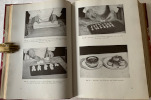
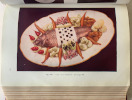
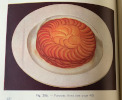
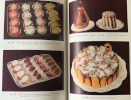
click on image to enlarge

Modern category
ref number:
11329 
